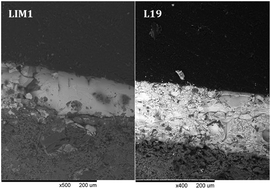A comparative study of Hispano-Moorish and Italian Renaissance lustred majolicas by using X-ray absorption spectroscopy
Abstract
Lustre is characterized by a few hundreds of nanometers thick heterogeneous metal-glassy nano-composite film. Silver and copper nanoparticles are dispersed within the outermost layers of the glaze, conferring peculiar optical properties to the whole material. Even though numerous studies have been carried out, many questions regarding the chemical composition, the mechanism of metal reduction and the optical properties of lustre still remain. Synchrotron radiation techniques are suitable for detailed studies on metal-glassy nano-composites. For example, X-ray absorption fine structure spectroscopy (EXAFS) can provide useful information on oxidized phases or atomic clusters dispersed in an amorphous medium, otherwise not achievable with diffraction techniques. In this work, we try to get information on the chemical state and local environment of metal atoms in the lustre and in the blue pigment, in order to achieve a better understanding of the reduction mechanism of different metals present and the manufacturing techniques related to different productions (Hispano-Moorish and Italian Renaissance lustred majolicas). In particular, different samples characterized by lustre and blue decorations only, produced in Spain and in central Italy in XIV–XV cent., are compared.

- This article is part of the themed collection: Synchrotron radiation and neutrons in art and archaeology

 Please wait while we load your content...
Please wait while we load your content...